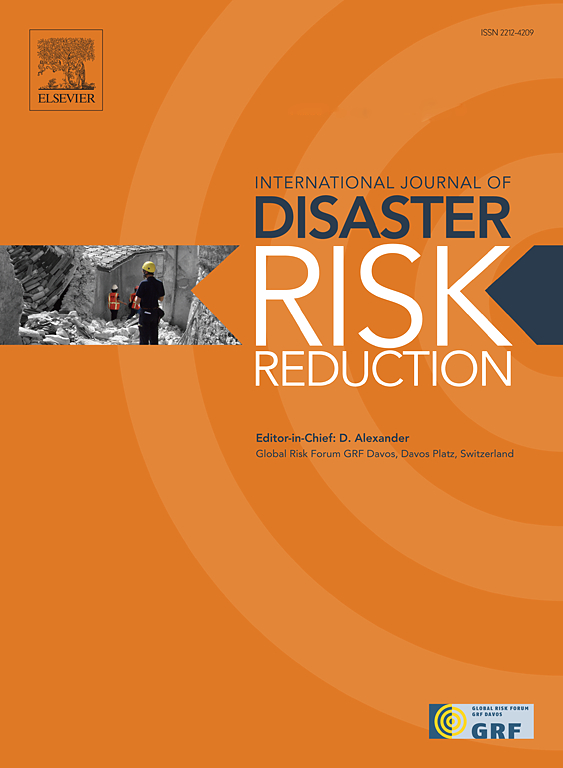Variations in road exposure and traffic volumes in the United States in areas susceptible to landslides
IF 4.2
1区 地球科学
Q1 GEOSCIENCES, MULTIDISCIPLINARY
International journal of disaster risk reduction
Pub Date : 2025-05-09
DOI:10.1016/j.ijdrr.2025.105567
引用次数: 0
Abstract
There have been many efforts in the United States (U.S.) to identify landslide threats for specific roads, but we are unaware of any effort to examine the entire national road system. We use geospatial tools to estimate the lengths and percentages of total length of roads in landslide-susceptible areas and differentiate results by road type, jurisdiction, and susceptibility level. We summarize traffic-volume counts in landslide-susceptible areas in terms of annual and maximum hourly counts using geospatial zones based on the concept of stopping-sight distances. A substantial percentage of the U.S. road network is in areas with some level of landslide susceptibility from 35 % (by length) of all roads to 68 % of county routes. Several Interstate highways have considerable lengths of road in areas with highest landslide susceptibility. There are hundreds of sites with high hourly and annual traffic volumes in areas of highest landslide susceptibility, indicating potential threats to life safety and traffic disruption.
美国易受山体滑坡影响地区道路暴露和交通量的变化
在美国,已经有许多努力来确定特定道路的滑坡威胁,但我们不知道有任何努力来检查整个国家道路系统。我们使用地理空间工具来估计滑坡易感地区的道路长度和总长度的百分比,并根据道路类型、管辖范围和易感程度来区分结果。我们根据停车视线距离的概念,利用地理空间分区,总结了滑坡易感地区的年交通流量和最大小时交通流量。从35%(按长度计算)的所有道路到68%的县道,美国公路网中有相当大比例的道路处于不同程度的滑坡易感性地区。几条州际公路在滑坡易感性最高的地区有相当长的道路。在最易受滑坡影响的地区,有数百个地点每小时及每年的交通流量都很高,显示对生命安全和交通中断的潜在威胁。
本文章由计算机程序翻译,如有差异,请以英文原文为准。
求助全文
约1分钟内获得全文
求助全文
来源期刊

International journal of disaster risk reduction
GEOSCIENCES, MULTIDISCIPLINARYMETEOROLOGY-METEOROLOGY & ATMOSPHERIC SCIENCES
CiteScore
8.70
自引率
18.00%
发文量
688
审稿时长
79 days
期刊介绍:
The International Journal of Disaster Risk Reduction (IJDRR) is the journal for researchers, policymakers and practitioners across diverse disciplines: earth sciences and their implications; environmental sciences; engineering; urban studies; geography; and the social sciences. IJDRR publishes fundamental and applied research, critical reviews, policy papers and case studies with a particular focus on multi-disciplinary research that aims to reduce the impact of natural, technological, social and intentional disasters. IJDRR stimulates exchange of ideas and knowledge transfer on disaster research, mitigation, adaptation, prevention and risk reduction at all geographical scales: local, national and international.
Key topics:-
-multifaceted disaster and cascading disasters
-the development of disaster risk reduction strategies and techniques
-discussion and development of effective warning and educational systems for risk management at all levels
-disasters associated with climate change
-vulnerability analysis and vulnerability trends
-emerging risks
-resilience against disasters.
The journal particularly encourages papers that approach risk from a multi-disciplinary perspective.
 求助内容:
求助内容: 应助结果提醒方式:
应助结果提醒方式:


